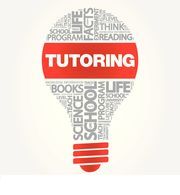What makes tutoring effective?
The one-on-one, one-on-two kind of small-group instruction that’s well targeted to what the student needs, that’s relationship-based so that there is trust, and a willingness by the student to take risks and really try to learn all the things that go along with that kind of close relationship.
What do we know about what makes a good tutor?
Actually, one thing that is surprising in the literature is that lots of people can be high-impact tutors. So it does not have to be a certified teacher. But paraprofessionals, or college students, lots and lots of people can be good tutors, if they’re well-supported, if they get data on what the student needs, and if they get supports for what they should do to address those needs.
Really, what good tutoring is is a positive relationship between a student and a tutor that targets the student’s needs, using high-quality instruction. You can get that in a number of different ways. The skills that the tutor has to bring, on top of just getting the good data and the instructional materials, is they have to be able to create a good relationship with the students.
What are the most important structural pieces of an effective tutoring program?
Wewant to make sure there’s enough time devoted to it, that it’s a program that has a consistent approach for each student. We gather data and feedback from students and the tutor to ensure we are hitting the right level and integrating with their school curriculum. Collecting thiskind of information is really important.
Tutoring is time-intensive. How should it be integrated into the school schedule?
It is supplementing, not supplanting, class time. It is sometimes done in block periods, where it could be part of a rotation. That said, while it’s separate, often from the traditional class period, the benefits are much bigger when the programs have been delivered outside of schools, rather than inside of school time. That may be because that’s when students actively partake in their tutoring sessions and don’t / can’t ‘hide at the back’ in class.
There’s been a huge increase in online tutoring and virtual tutoring. What do we know about how effective it is in that format?
There is evidence, actually that it is very effective actually, because students have gotten really used to [virtual] interactions where it is personal. You can have that relationship-based part of tutoring online. The trick about it, again, is that it can be online, but the student should be in school as much as possible, because there is still that issue of, if you do it online and not in school, it’s hard to get the students to show up. There are some potential advantages to being online. [In virtual tutoring], you have platforms that have been developed to allow for really easy communication, where you can write something on a screen, and they can go back and forth on that, and then it saves it, and you’ve got it next time. Also your supply of tutors expands, so if you have a high-demand area, like for high school math or for speaking a language other than English, you can get tutors from a broader range.


